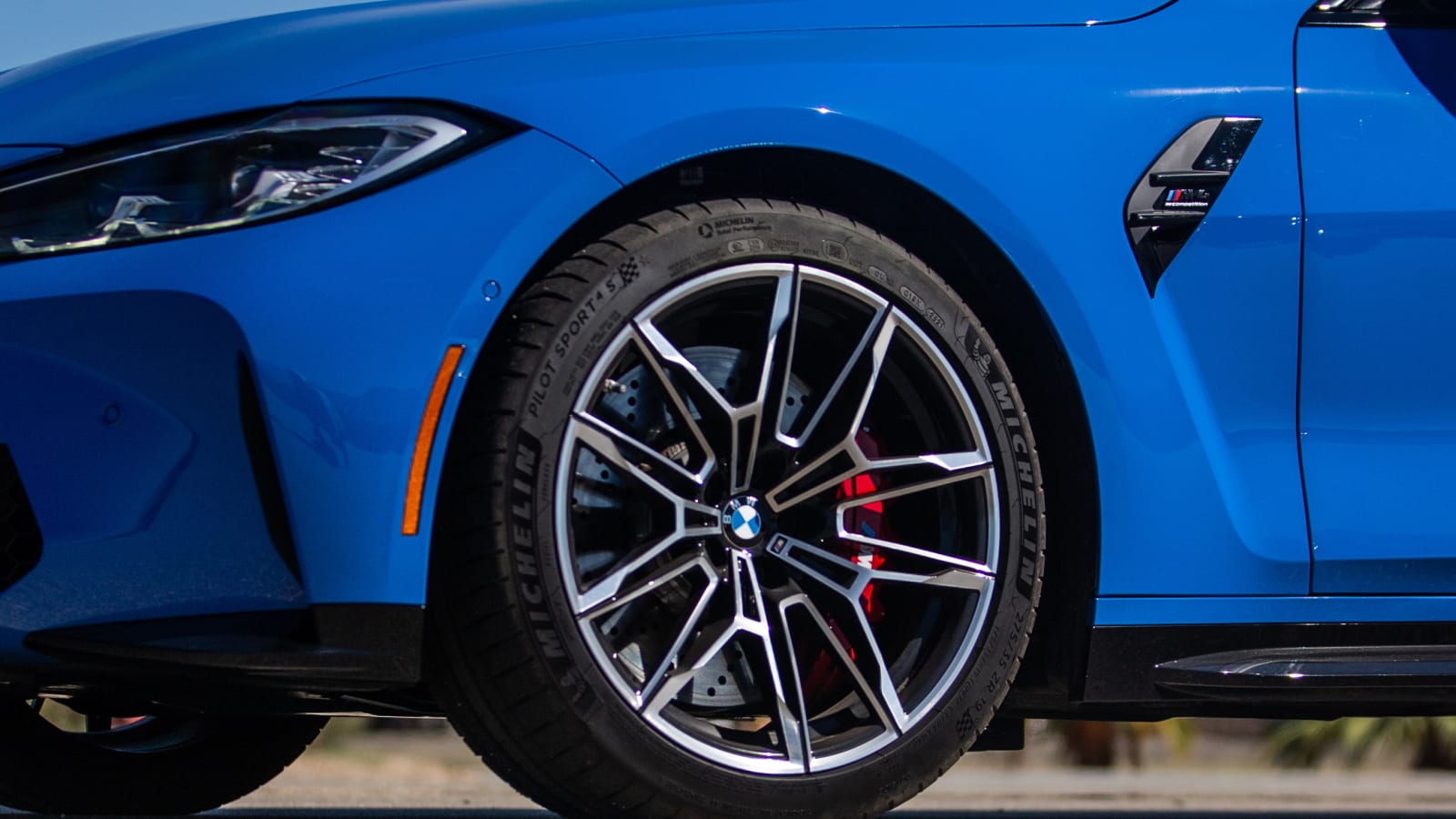THERMAL, Calif. — The BMW M3 and M4 have never been available with all-wheel drive — that is, until now. If it weren’t for the collective automotive world blowing a gasket over a grille design during the M3’s and M4’s initial reveal, the majority of the panic surely would’ve been directed toward the addition of an extra two driven wheels. It caused a kerfuffle when the M5 moved to all-wheel drive, but the execution was so blasted effective that complaints dried up quickly.
Of course, one reason to not be upset about the existence of M3 and M4 xDrive models is that rear-drive M3s and M4s are not going anywhere. Another perk BMW tossed into the pot is the ability to completely lock power to only the rear wheels, just like it does with the M5. You’re forced to do without stability control in this two-wheel drive mode, but it’s better to have it than no two-wheel drive whatsoever. The last piece of vital info is that the xDrive all-wheel-drive system is only available on the higher-power Competition models — equipped with the 3.0-liter twin-turbo inline-six making 503 horsepower and 479 pound-feet of torque — which means it’s also exclusively paired with the eight-speed automatic transmission. There will be no manual all-wheel-drive M3s or M4s.
The system is rear-biased, and under normal conditions, power will only be sent to the rear wheels. BMW says power will be sent forward when additional traction is required, and considering our slip-and-slide first drives of the M3 and M4, we knew coming in that the system would be “requiring” torque to be delivered up front often.
Power is shuffled between the front and rear axles via an electronically-controlled multi-plate clutch, and the rear axle features BMW’s Active M differential to shuffle torque back and forth between the rear two wheels. As for front-wheel control, BMW utilizes a transfer case with an integrated traction control unit that is able to react in real time to rotational speed differences between the front and rear wheels. BMW says this strategy is superior to everything passing through a central stability control computer, and allows the car to be more predictable and stable when performing high-speed maneuvers on a racetrack.
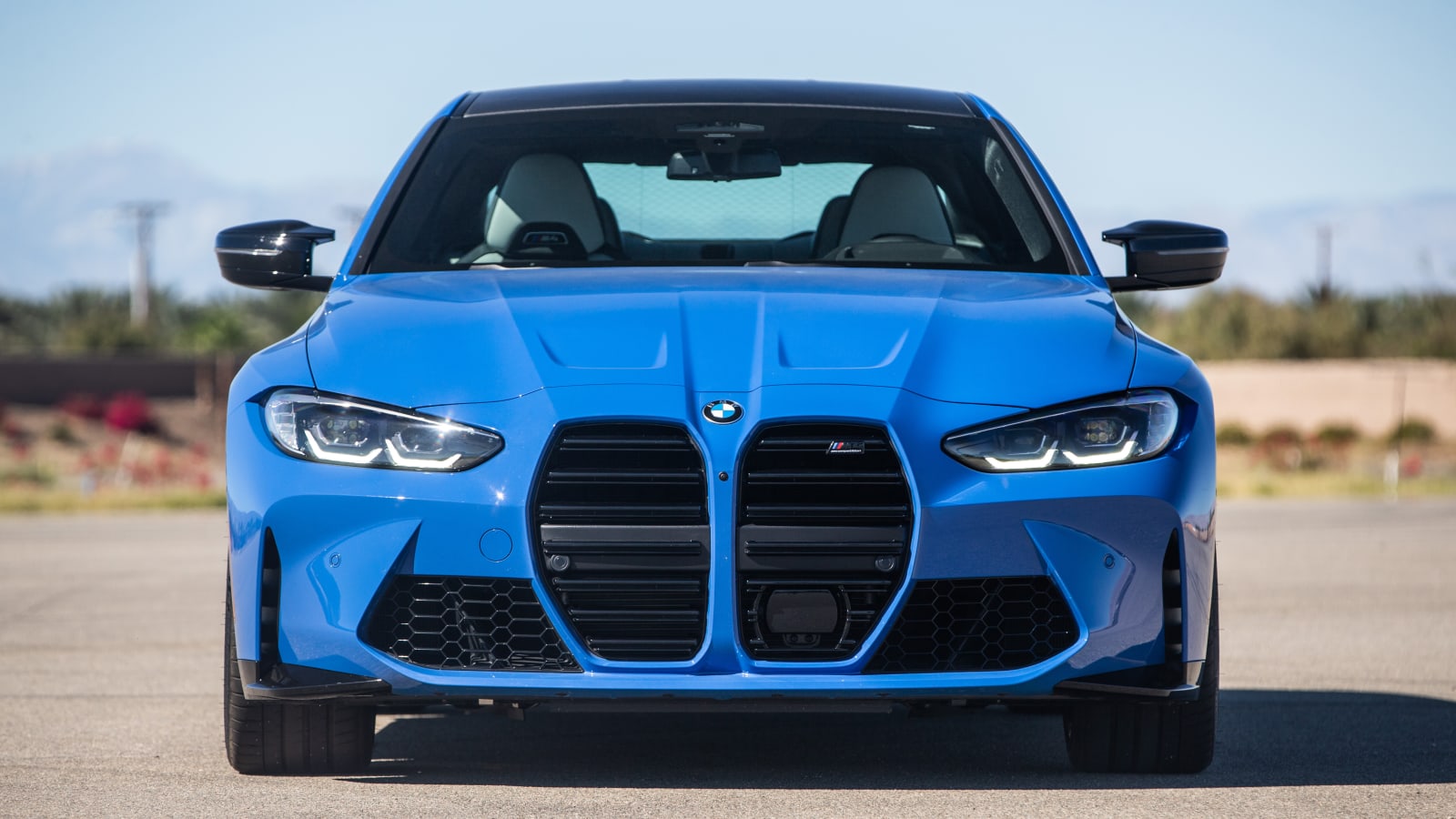
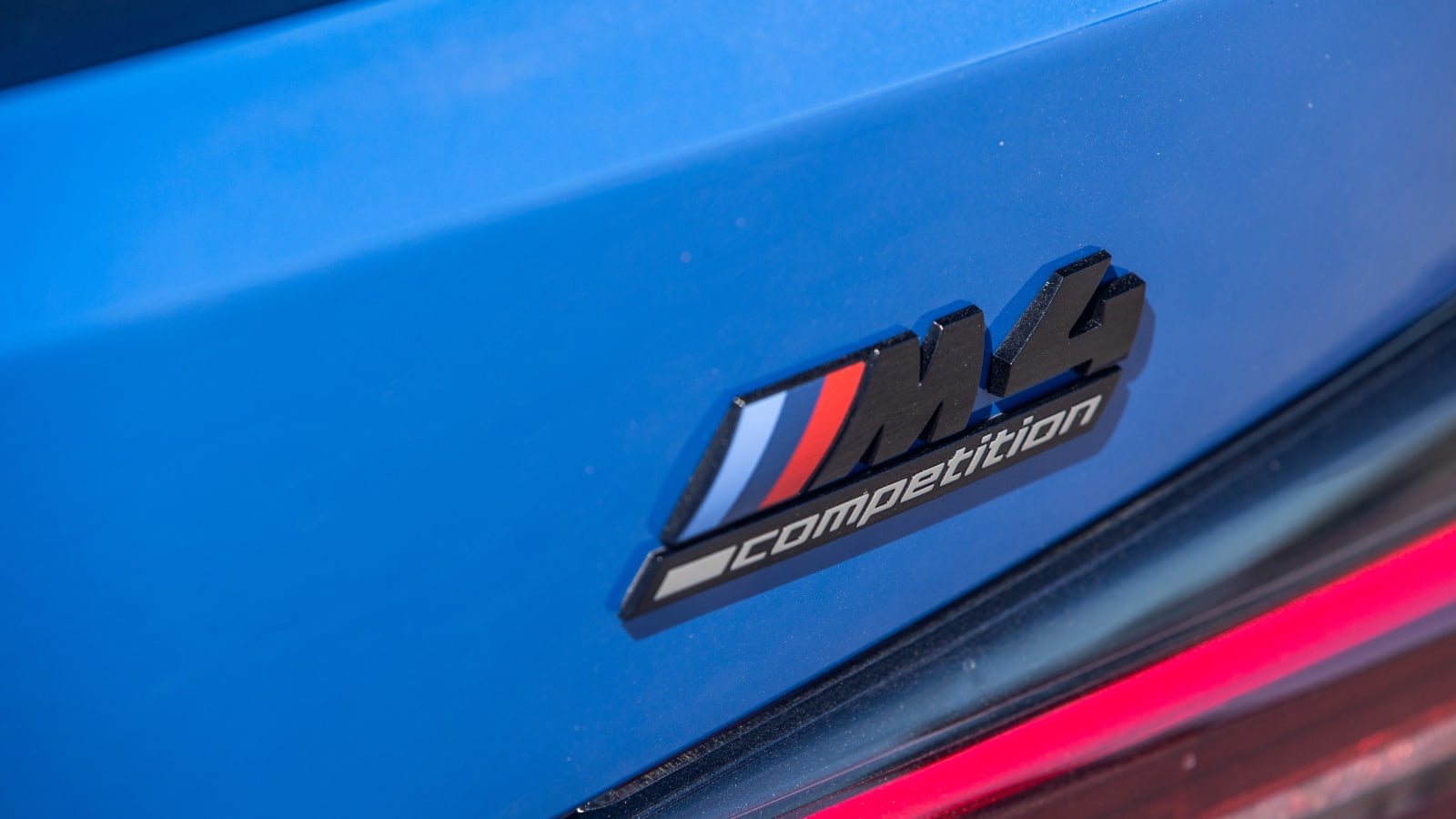
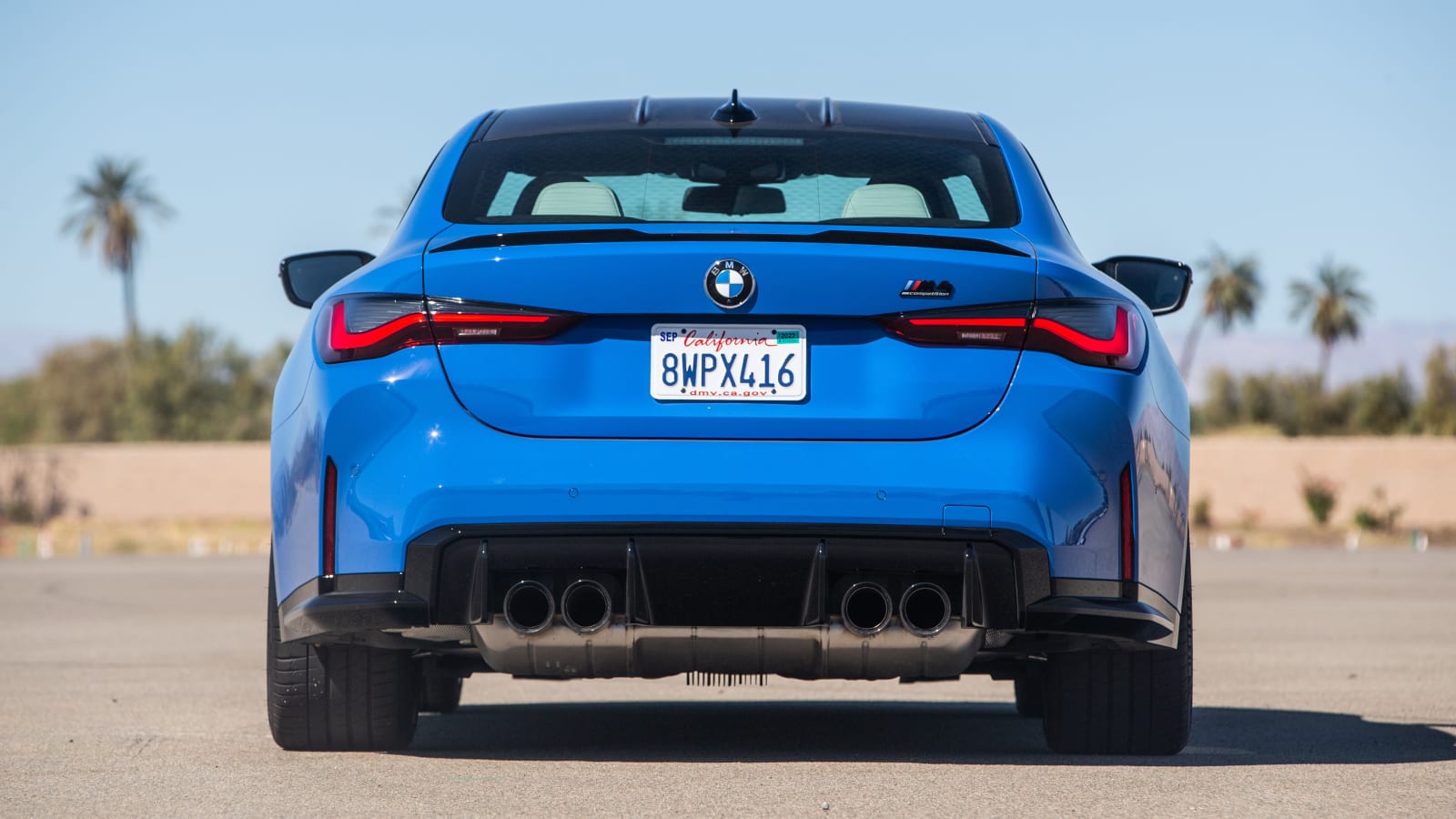
The three xDrive modes you can choose from are 4WD, 4WD Sport and 2WD. We already explained the 2WD mode, but the 4WD mode is your default setting that has all of the traction and stability control systems in their most stringent and conservative settings. Meanwhile, 4WD Sport will direct more power rearward by default, and allows for greater slip angle, but still keeps the front axle in play — BMW says it’s the best mode for the track, and we agree.
After driving the rear-drive M3 and M4, it was clear that acceleration times for those cars were severely limited by rear traction. Once up and running, the M3 Competition ran like an absolute banshee, but only after sorting out the initial wheel slip. Unsurprisingly, the xDrive M3 and M4 models are quoted to do the 0-60 mph sprint 0.4 seconds quicker than their rear-drive counterparts, bringing the official time down to 3.4 seconds for both cars — this quicker time required BMW to modify its oiling system to handle the increased accelerative forces off the line. This quicker time comes in spite of the extra 100 pounds of curb weight added to both cars for the all-wheel-drive gear that also caused BMW to modify the front-axle geometry, leading to the steering ratio being re-tuned from 15.0:1 to 14.6:1 to retain the same handling feel as the rear-drive cars. For those counting, that puts the M3 Competition xDrive at 3,990 pounds and the M4 Competition xDrive at 3,979 pounds.
You don’t feel the extra poundage going around corners, but the existence of all-wheel drive is unmistakable from the first apex and onward. On the Thermal Club’s South Palms race track, the all-wheel-drive M3 is remarkably more secure and easy to drive — we did back-to-back sessions in RWD and AWD versions to feel out the differences. Even with all the traction control systems on, the xDrive car was reluctant to cut in on accelerative motion. The level of nuance and restraint you must show the throttle pedal in the xDrive model is greatly reduced versus the wily and tail-happy regular M3. Instead of negotiating with the throttle the whole way through and around a long bend to keep the front end pointed straight, you can get a little reckless on the throttle and just let the car sort it out best. For those who aren’t pros, that means you end up getting slingshot off corners much harder and faster than you might be capable of with the RWD models.
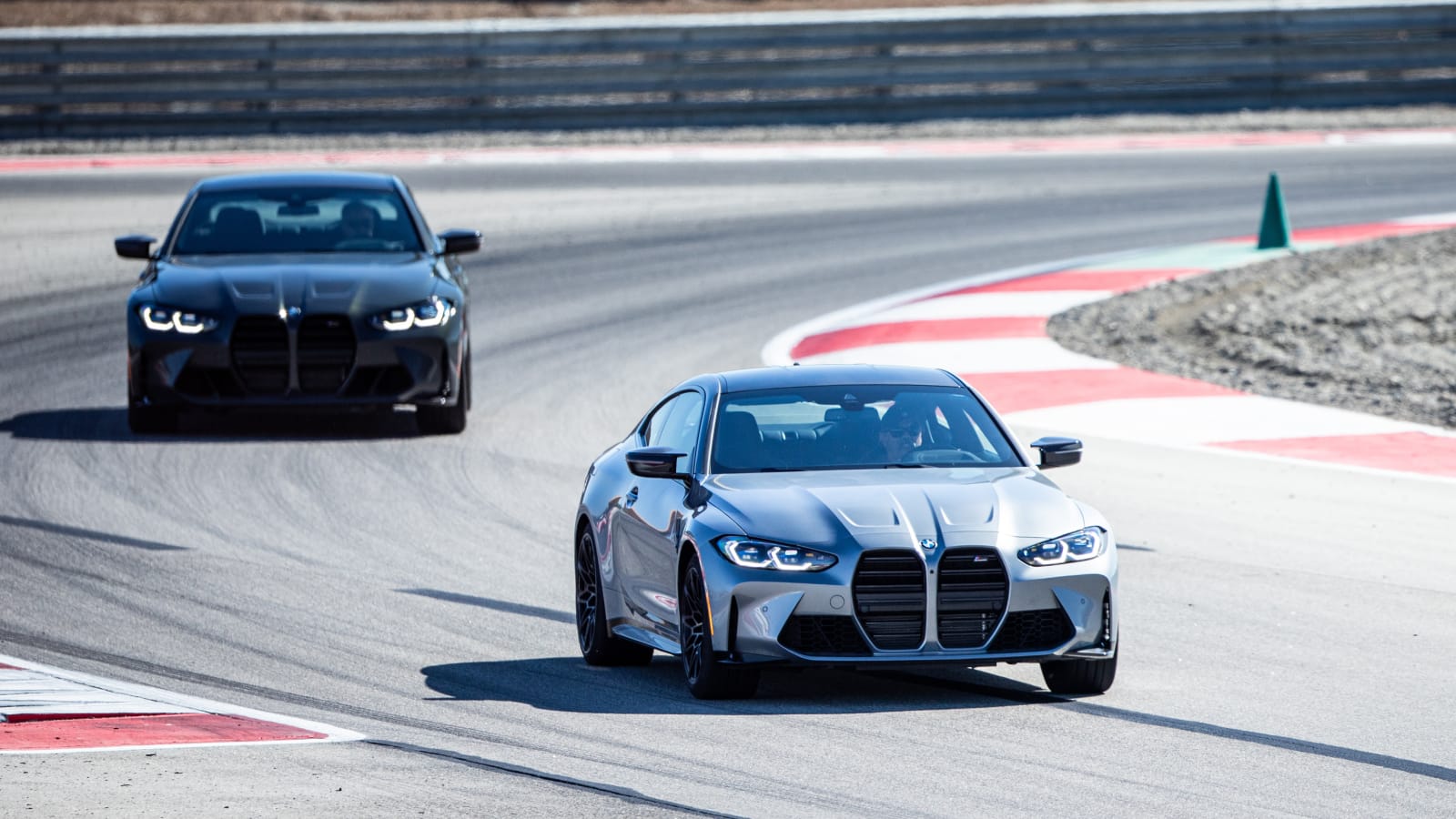
That said, there’s even fun to be found in the M3 and M4 xDrive cars for pro drivers, too. BMW’s factory race car driver, John Edwards, shared with us that he prefers the AWD version of the car because of its ability to both be a hilarious, sideways smoke show and deadly precise at the same time. How? You can program 4WD mode into the BMW “M1” preset steering wheel button and 2WD mode into the “M2” preset, and swap between them mid-lap with just a quick press of either button. That way, Edwards says he can swap into 2WD mode under braking to set the car up for big drifts around the corner, then quickly swap back into 4WD mode to get maximum acceleration out of the drift and to the next corner. We have a feeling the casual track day enthusiast won’t be taking advantage of this capability, but the power exists.
Outside of the track, the M3 and M4 xDrive continue to exhibit much more stable and safer driving behavior than the rear-drive car does. You have to really ask for it with your right foot if you want some slip action from the rear in corners, as even the 4WD Sport mode aims to keep the car on a straight, missile-like path. It involves less thinking and wheel maneuvering, and in that sense it’s less fun and involving to drive when compared to the RWD version. That’s the typical tradeoff when it comes to adding all-wheel drive to sports cars, and the trend is no different for the M3 and M4.
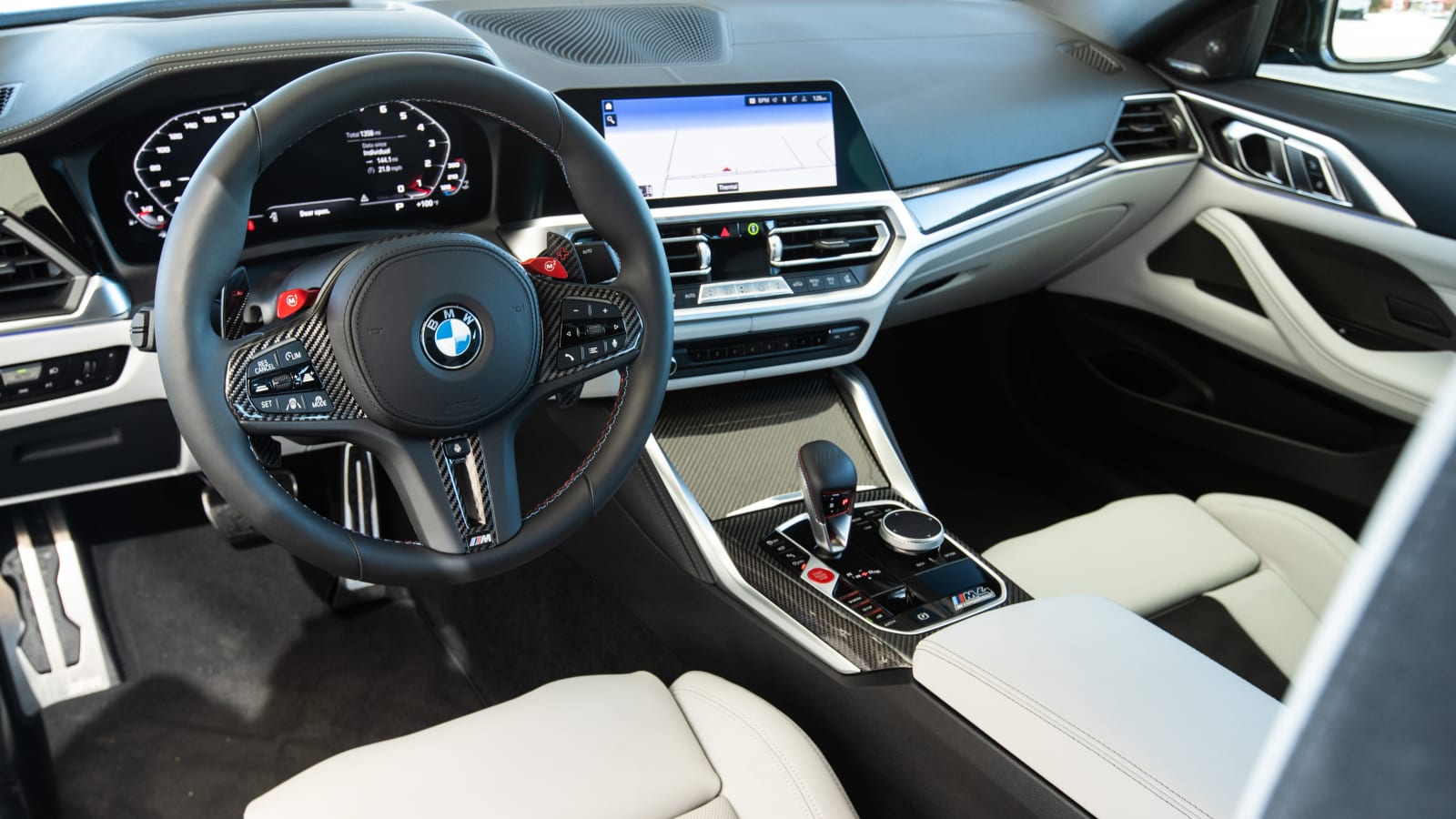
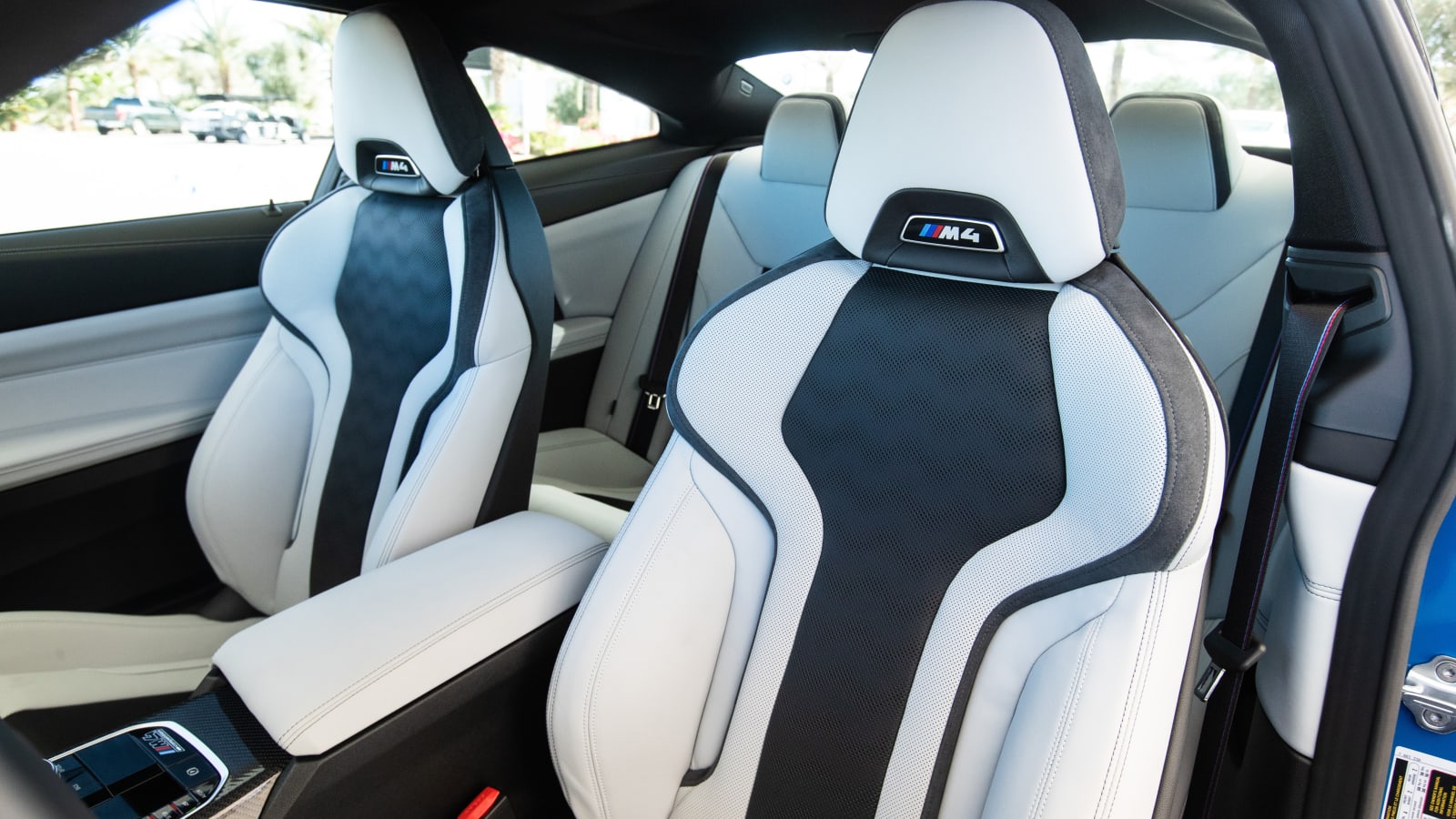
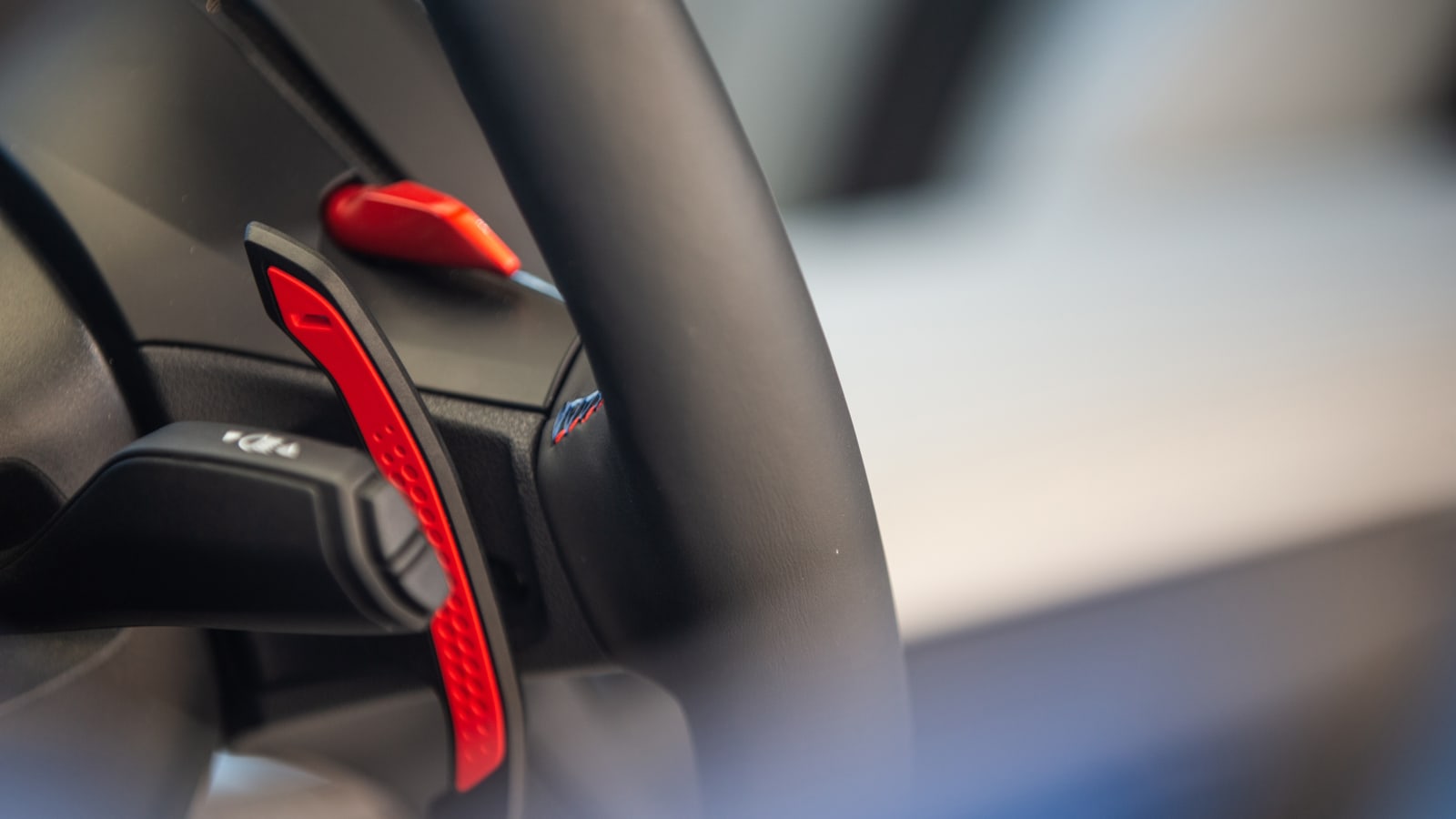
Setting aside handling and acceleration performance, the addition of all-wheel drive to the M3 and M4 furthers the car’s mission as the ultimate daily driver for an enthusiast. Winter tires would make an M3 perfectly drivable in the snow, but adding AWD traction is going to make it a rocket-powered bobsled. There’s still the relatively low ground clearance of 4.8 inches, but nobody said the car could double as a snowplow. Since our drive took place in sunny California, we can’t deliver a final verdict on snow performance yet, but that can hopefully change when we get our hands on an M3 or M4 xDrive this winter.
As for what it will cost you, the xDrive models are predictably more expensive than their rear-drive equivalents. The upcharge for both the M3 and M4 xDrive models is the same at $4,100, landing the final price for the M3 Competition xDrive at $77,895 and the M4 Competition xDrive at $79,795. That’s a bucket-load of money, but it’s right in line with its only other all-wheel-drive competitor, the Audi RS 5. Between these two, the M3 or M4 are easy shoo-ins as being the best to drive. As far as design … we’ll let you make up your own mind.
At their best, the all-wheel-drive M3 and M4 make the spunky M car a more accessible and friendly performance vehicle. If you could switch into rear-drive mode and keep stability control in play, it’d be a perfect world, because going without the electronic helpers turns the M3 and M4 into considerably less approachable performance cars. This flaw, and the not-small price increase of $4,100, has us favoring the rear-drive flavors of M3 and M4. Unless, of course, you plan to use the car as a daily driver in a snow-heavy state or want the added security blanket of all-wheel drive on a race track. No matter which way you choose, having the choice of all-wheel drive is nothing to be distressed about.
Related video:

